
The pandemic changed the travel industry as we know it. One of the most prominent trends was that people began rediscovering their own backyards. Now, customers are not only turning to Google to find unique things to do on their trips, but also in and around their hometowns.
Fortunately for activity operators, Google searches for “activities near me” have grown tremendously over the past couple of years. Specific searches like “ziplining” and “aquariums” grew by 280% and 115%, respectively, over a one-year period from August 2020 to September 2021.
In response, Google has introduced a new way of searching for and booking attractions, tours, and activities.
The new search feature called Google Things to do connects travelers to new and interesting activities in the places they’re visiting. More importantly, it allows travel suppliers to direct traffic back to their own websites for free.
What is Google Things to do and how can your company leverage this feature to drive more bookings? Let’s find out.
- What is Google Things to do?
- How does it work?
- Why should tours and attractions care about it?
- 3 examples of how to use it to drive more bookings
- 1. Expand your reach with Things to do ads
- 2. Use a compatible booking system
- 3. Partner with an OTA that works with Google
What is Google Things to do?
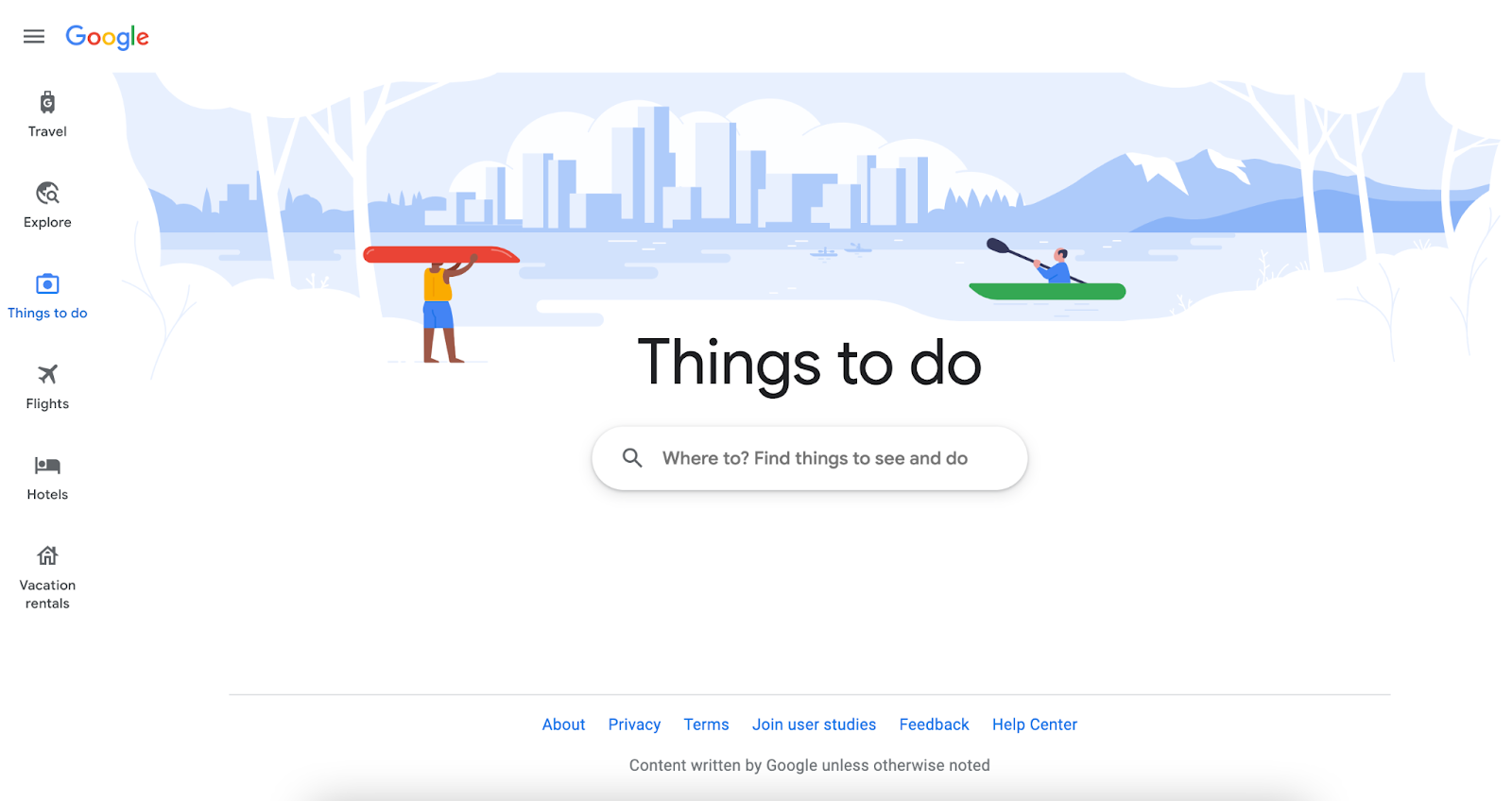
Google Things to do is a search experience that allows travelers to research attractions, tours, and activities through Google and book whatever catches their eye.
This makes it easier for operators to promote their tours and activities to people who are actively searching for them.
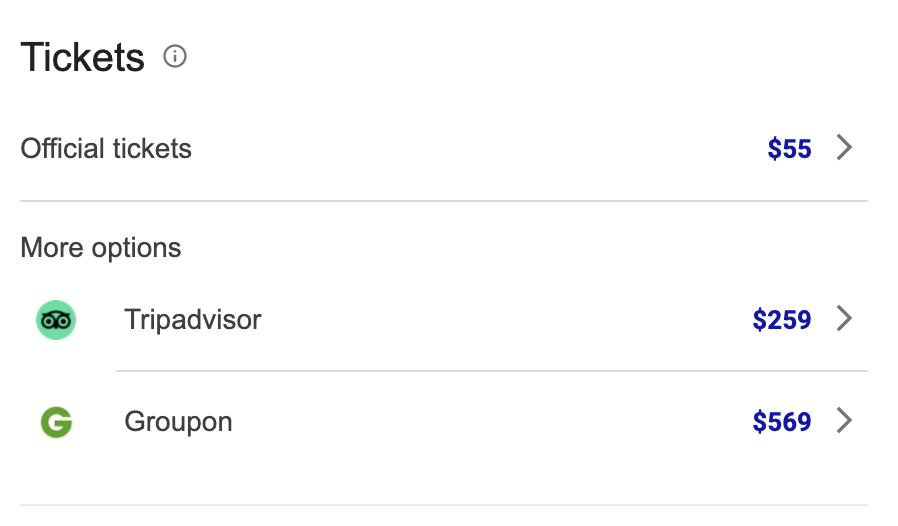
The Google things to do feature has replaced Reserve with Google, which allowed people to book for travel-related activities directly from Google Search, Google Maps, or the Google Reserve search bar.
Similarly, Google things to do connects customers to relevant travel services based on their Google searches. Now, customers are prompted to visit the operator’s website or the various Online Travel Agencies (OTAs) that sell the experience and book directly.
As you can see in the example above, the customer is given a few different ticket options., but the first one — labeled as “official tickets” — directs customers to your official booking page.
How does it work?
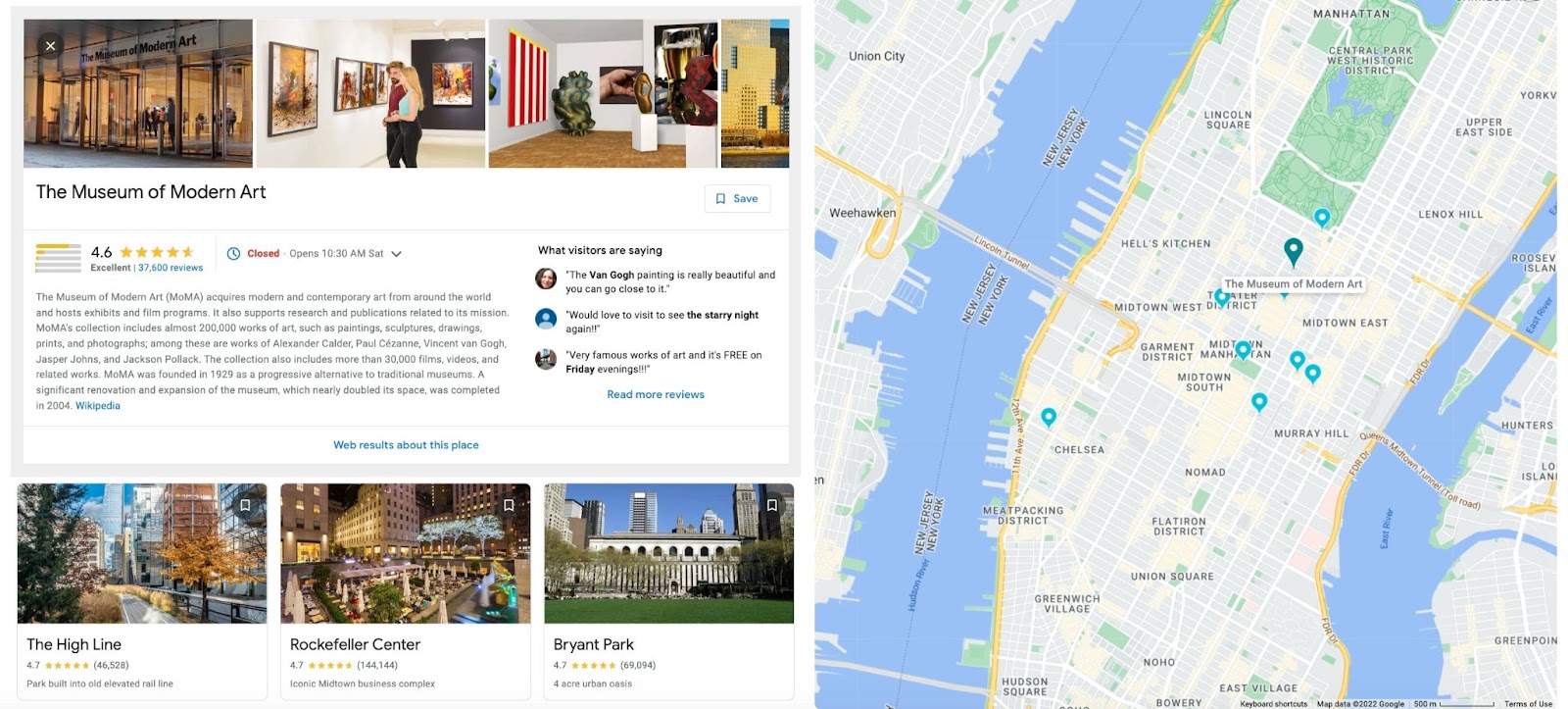
Let’s say someone is visiting New York City and makes the following Google search: “how to visit the Empire State Building.” They’ll find general information about the tourist site, as well as several ticket booking links.
This search feature was previously only available for attractions operators, but it’s now expanding to include tours and activities, too. So if someone searches for “bike tours in NYC,” the tour operators that offer that service will appear in the results.
Your company can now list your products with Google Things to do at no cost to you.
Google encourages all attractions, tour operators, or activity providers to first explore connecting to its platform through one of its approved connectivity partners, such as Xola. With Xola, you can easily integrate your products with Google so that your company begins appearing in the right Google search.
Along with the free listing, Google has also introduced a new ad format for Things to do. These search ads appear above search results and show photos, prices, and a ticket booking link for the activity.
Why should tours and attractions care about it?
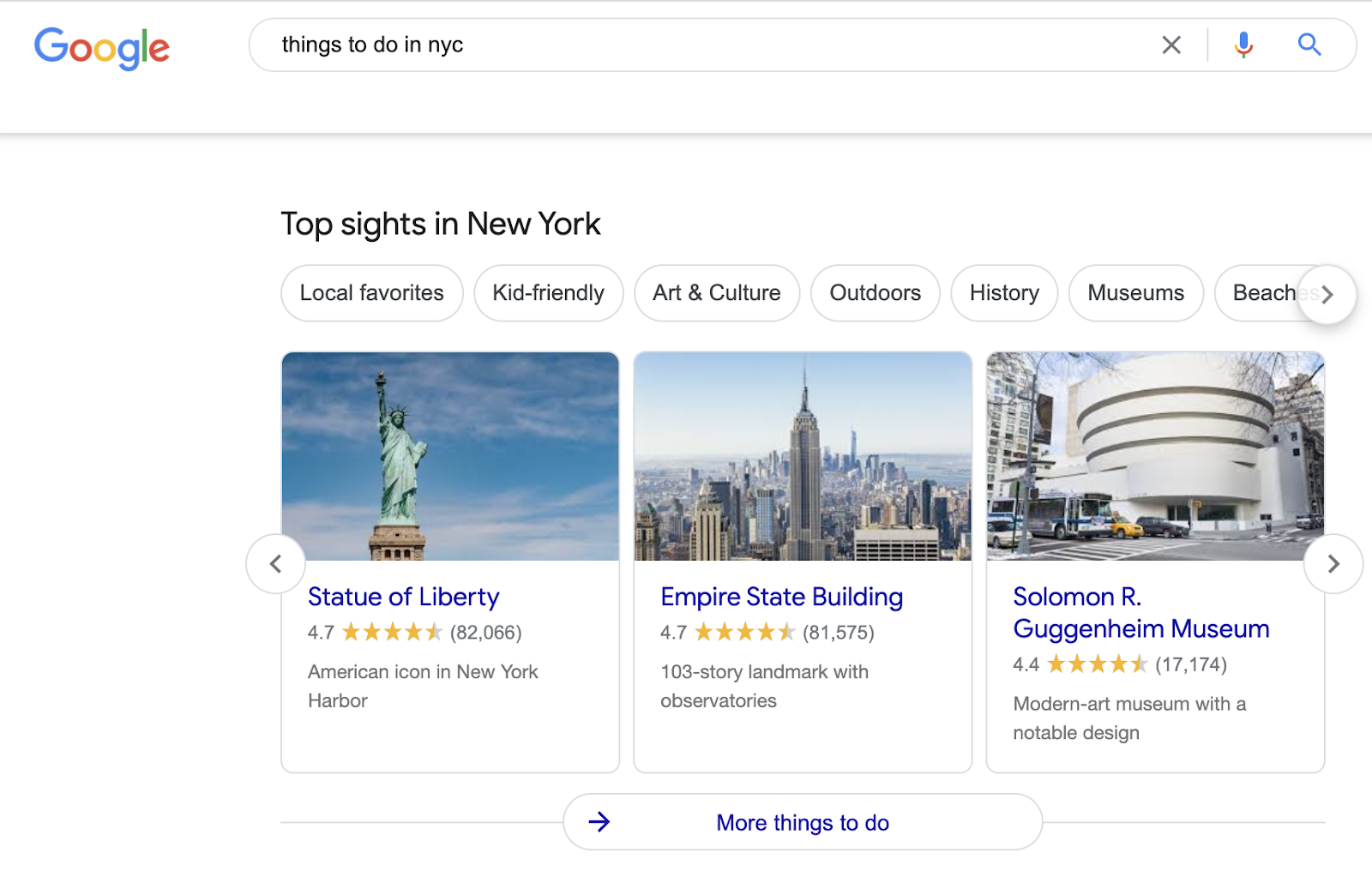
The goal behind Google things to do is to help travelers discover, compare, and book the best travel options. This is why Google first introduced hotel booking links in 2021, which allowed hotels to share direct links to their website for free.
Google found that the free hotel booking links increased engagement for both small and large hotel brands.
Now that Things to do is available to attractions and tours, it can help get your brand in front of the hundreds of millions of people who use Google to plan their travels.
Google found that nearly half of experiences bookings are happening once travelers arrive at their destination, according to a 2018 study. People are also increasingly searching for experiences close to home, and you can now appear in their search results.
More importantly, Google Things to do will direct people to your website for bookings. This can help you boost direct bookings and become less reliant on OTAs, which charge high commission fees that cut into your profits.
3 examples of how to use it to drive more bookings
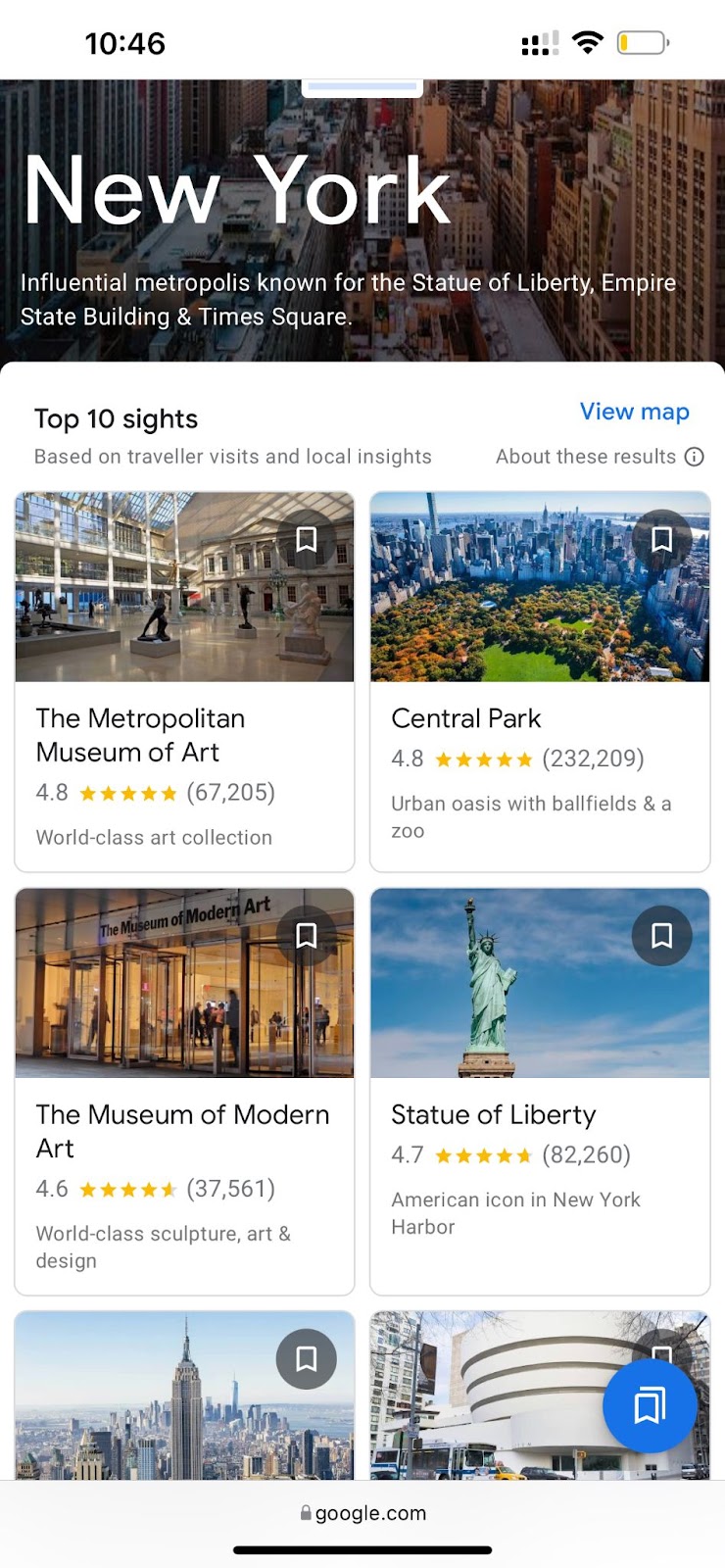
1. Expand your reach with Things to do ads
You can now advertise on Google to promote your activities. As soon as someone searches for “things to do in New York City,” your products can be front and center.
The ads share more details like ticket pricing, images, and reviews to make your company stand out in search results. You only pay when someone clicks one of your ads. When they click on the booking link, they’ll be directed to your website to finalize the purchase.
Pro tip: Make sure your Google My Business page is up to date to increase your chances of appearing in searches organically.
2. Use a compatible booking system
ake sure your booking software is an official connectivity partner — such as Xola — to simplify the integration process. Your booking software can automatically generate a booking page according to Google’s strict specifications, which makes it easier for you to set up your listing.
You’ll then be able to keep track of new reservations and avoid overbookings.
3. Partner with an OTA that works with Google
Google will display links to your website as well as to the OTAs selling your tours. This allows customers to compare offers across multiple sites. If they feel like they’re getting a good deal, it can persuade them to book on the spot.
***
As travelers hit the road again, most are stopping by Google first. Whether it’s choosing the best destination to visit this summer or discovering unique outdoor activities to do with kids, Google is the trusted search partner they’re turning to.
With Google Things to do, you can ensure your company is added to their itinerary.





